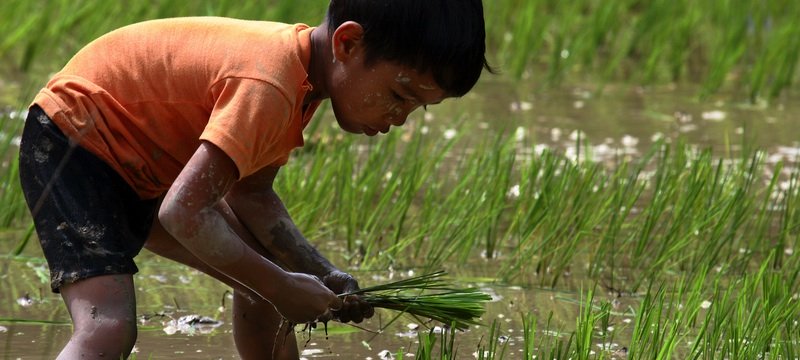We all know that hundreds of millions of girls and boys worldwide are involved in work that deprives them of adequate education, health, leisure and basic freedoms, abusing their rights.
More than half of these children are exposed to the worst forms of child labour like slavery, work in hazardous environments, or other forms of forced labour, illicit activities such as drug trafficking and prostitution, and even involvement in armed conflict.
The World Day Against Child Labour was launched by the International Labour Organization (ILO) in 2002 as a way to highlight the plight of these children. It is celebrated on June 12th every year since then, and is intended to serve as a catalyst for the growing worldwide movement against child labour. This year, World Day Against Child Labour draws attention to the role of social protection in keeping children out of child labour and removing them from it.
According to the ILO, the term “child labour” is defined as “work that deprives children of their childhood, their potential and their dignity, and that is harmful to physical and mental development. It refers to work that is mentally, physically, socially or morally dangerous and harmful to children, or work whose schedule interferes with their ability to attend regular school, or work that affects in any manner their ability to focus during school or experience a healthy childhood”.
Every child has the right to be loved, protected, educated, safe, heard … in a few words, be just a child! And the only thing that all children want is to be happy!
Here are some facts about child labour:
1.
According to the ILO, about 215 million children aged 5-17 years worldwide are engaged in child labour.
2.
Of these 215 million children, 115 million are engaged in hazardous work.
3.
About 1 in every 6 children, is supposed to be a child labour.
4.
Child labourers are more vulnerable to abuse of their labour rights. They lack overtime pay, health insurance, are paid lower wages, and often do not know their human rights.
5.
Millions of children are engaged in various types of work that are simply unacceptable, as they are really dangerous, hazardous and catastrophic. These types of work include working in mines, working with pesticides and chemicals in agricultural sector, working with really dangerous mancbineries and being exploited as domestic servants.
6.
22 million children die annually due to the hazardous conditions in the sweatshops.
7.
Millions of girls have been the victim of child labor in the form of domestic servants, and are more likely to be exposed to exploitations and abuse, including sexual harassment. Girls from rural Nepal are recruited to work in carpet factories, but are then trafficked into the sex industry over the border in India.
8.
Children involved in tobacco cultivation are subjected to serious health risks, such as nicotine poisoning.
9.
An estimated 12 percent of children in India ages 5-14 are engaged in child labor activities, including carpet production.
10.
According to the ILO, it would cost $760 billion over a 20-year period to end child labor. The estimated benefit in terms of better education and health is about six times that – over $4 trillion in economies where child laborers are found.
11.
Some children are forced to weave up to 18 hours a day, often never leaving the confines of the factory or loom shed.
12.
Africa has the world’s highest incidence rates of child labour. In Sub-Saharan Africa more than 40% of all children aged 5-14 labour for survival.
13.
Agriculture accounts for 60 percent of child labor. The ILO estimates that agriculture is the largest employer of child labor in Africa.
14.
Only 1 out of 5 children involved in child labor is paid for his or her work.
15.
The majority of children in child labor perform unpaid family work.
16.
Six out of the ten countries listed as the worst countries for child labor are in Africa: Sudan, DR Congo, Somalia, Ethiopia, Burundi, and Zimbabwe.
17.
60 percent of children in Ethiopia are engaged in child labor. Many of them work in the mining industry, which poses some of the biggest dangers of child labor.
Many parents from poor countries see themselves obligated to push their children to work out of necessity, because they can’t support their families on their own income. One of the best ways to fight child labour is to provide fair salaries and safe working conditions for parents, thus they can sustain their families without being forced to depend on their children. Fighting against child labor is to fighting global poverty.
https://youtu.be/BcI4l3arrHI
